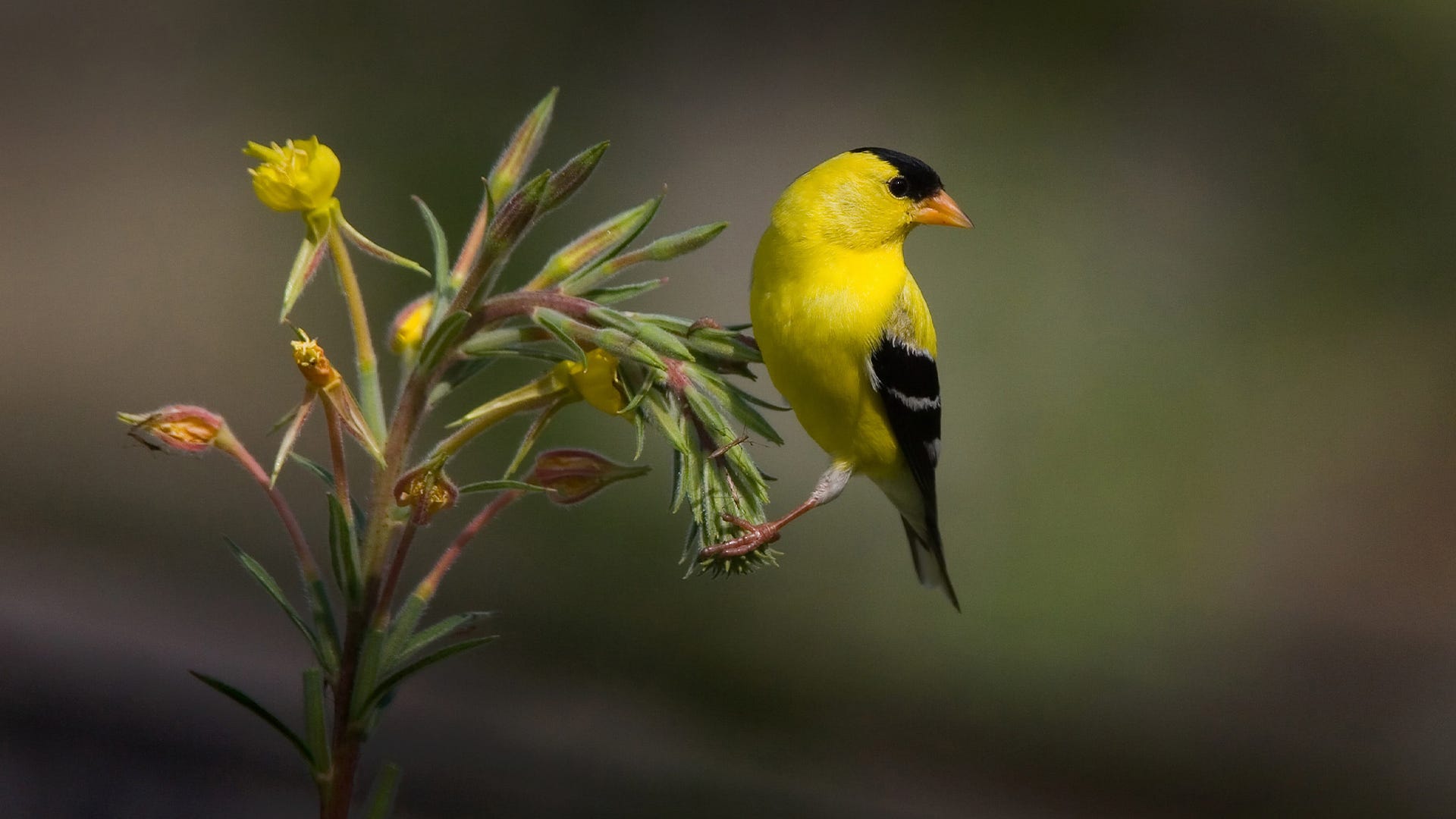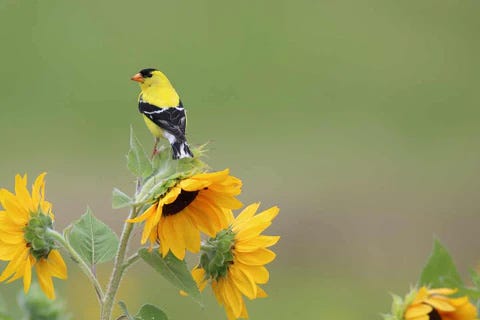
Goldfinches are beautiful birds, adding a cheerful yellow burst to any yard. But how can you bring goldfinches to your yard to enjoy? It is easier than many birders realize to add a gleam of feathered gold to the landscape.
Types of Goldfinches
There are three types of goldfinches commonly seen in the United States, and all three belong to the Fringillidae bird family.
The American Goldfinch (Spinus tristus) is the most colorful of the flock, with the males’ bright yellow plumage, black cap and wings, and white wing bars and rump. Females are duller olive-yellow. American goldfinches are found throughout the United States, southern Canada, and northern and eastern Mexico.
The Lawrence’s Goldfinch (Spinus lawrencei) is the least common of the goldfinches and also the most boldly marked. Males have a black cap and face, gray plumage, and yellow wings and breast. Females have less yellow and lack the black markings. These birds have a much more restricted range and are only found in southern California, southern Arizona, southwestern New Mexico, and northeastern Mexico.
The Lesser Goldfinch (Spinus psaltria) is somewhat smaller than the American goldfinch, and the males are bright yellow above, olive or black on the back, and show a white wing patch. Females are paler olive yellow or olive green all over. These birds are common in the western United States and along the Pacific coast, as well as throughout Mexico and into Central America.

Why We Love Goldfinches
No matter which species of goldfinch comes visiting, they all bring desirable characteristics to the yard. Not only are these birds colorful, but their feisty attitudes can be fun to watch as they flit about the yard in active, energetic flocks. Goldfinches eat a wide range of seeds, including many weed seeds, and their hearty appetites can help prevent weeds in the yard and garden.
Their distinctive songs and flight calls have musical, buzzy, and twittery qualities, making them just as much fun to hear as they are to see. Furthermore, because most goldfinches stay in their range year-round, they bring pleasure to the yard in every season, giving birders the opportunity to witness different plumage, feeding, and behavioral changes to learn more about the birds.
Any yard that meets goldfinches’ needs for food, water, shelter, and nesting sites can be home to a colorful flock. Fortunately, it’s easy to attract goldfinches with simple steps.
Feeding Goldfinches
Because goldfinches eat seeds, planting seed-bearing flowers is a great way to attract these curious birds. Coneflowers, sunflowers, zinnias, asters, cosmos, poppies, sedum, and marigolds are all great options, and even weed flowers like dandelions will attract goldfinches.
Adding sunflower hearts and chips to a feeding station will also appeal to goldfinches, and these birds are especially attracted to Nyjer seed and wild finch mixes. Because these birds travel in flocks, it is best to use larger thistle feeders or multiple tube feeders that can accommodate more birds at once.
See also: All About NyjerWater for Goldfinches
Like all birds, goldfinches will visit waterers and baths for drinks and bathing. Because these birds are smaller, however, baths should be shallower so the birds feel comfortable. A basin just 1-1.5 inches deep is best for goldfinches, or sticks or rocks could be added to deeper basins to give goldfinches a more comfortable place to perch and easily access the water.
Baths should be cleaned frequently to avoid algae growth, insect infestations, or bacteria that could be harmful to goldfinches and other thirsty birds. Adding a dripper or solar fountain to a bath will also help draw goldfinches’ attention and invite them to have a drink.
Goldfinch-Friendly Shelter
Goldfinches will seek shelter in thicket-like plantings when they feel threatened, either because they have been startled, a predator is stalking nearby, or the weather has worsened. Creating densely layered plantings of both deciduous and evergreen plants in the yard, particularly along a fence or against a wall that can serve as an additional windbreak, will give goldfinches the ideal retreat. Both trees and shrubs should be used, and a brush pile can be a supplemental option, especially before plants may be mature enough to provide sufficient shelter.
See also: The Late Blooming Summer BreederNesting Sites for Goldfinches
These small birds will nest in the same shelter they use for protection, so it is doubly important to provide goldfinch-friendly shelter in the yard. Goldfinches will not use bird houses or nesting boxes, but they will take nesting material from piles or holders that may be available.
Natural nesting materials such as dandelion, thistle, or milkweed down are preferred, and balls of natural cotton can also tempt goldfinches building their best nests. Because these birds nest later than many other songbirds – goldfinches don’t typically start nesting until late June – leaving nesting material available later in the season is essential.
It can take time to attract goldfinches, and it is important to be patient and give these colorful birds the opportunity to notice just how goldfinch-friendly a yard can be. It is easier to entice them in winter when natural food sources may be scarce, but their plumage is not so bright at that time of year and it can be easy to miss their quick visits.
Watch bird feeders and baths closely, and soon you’ll be enjoying that glint of gold and the twittering energy these birds bring to the yard.







